Chinese money plant watering: how much and when to water can be answered in a variety of ways depending on a lot of different factors. In general, when the soil feels dry 1 inch or more down, it’s time to give it a thorough soaking. If that’s not the mantra for watering Pilea peperomioides, it should be. Keep reading to learn everything you need to know about Chinese money plant watering.

Chinese money plants suffer more from overwatering than underwatering, so, when in doubt, wait it out.
©Mehta Photography/Shutterstock.com
Pilea Peperomioides: A Brief History
Chinese money plant (Pilea peperomioides), native to Yunnan, China, was initially discovered by Scottish botanist George Forest in the earliest years of the 20th century. However, it was widely introduced in the West in 1946 by Agnar Espegren, a Norwegian missionary. Esperegren and his family were rather abruptly forced to evacuate from China. China was on the brink of civil war. On his way out of the country, Espegren was either given or purchased a Pilea peperomioides. Safely out of China, the family landed in Calcutta, India, living there for the better part of a year before returning to Norway.
Unpacking his luggage upon his return home, Espegren discovered the all-but-forgotten-for-a-year plant. For a year. And it was still alive. I use this story to illustrate the Chinese money plant’s drought tolerance. The worst thing you can do is overwater. I can’t stress that enough. Where these plants and water are concerned less is best. But I digress.
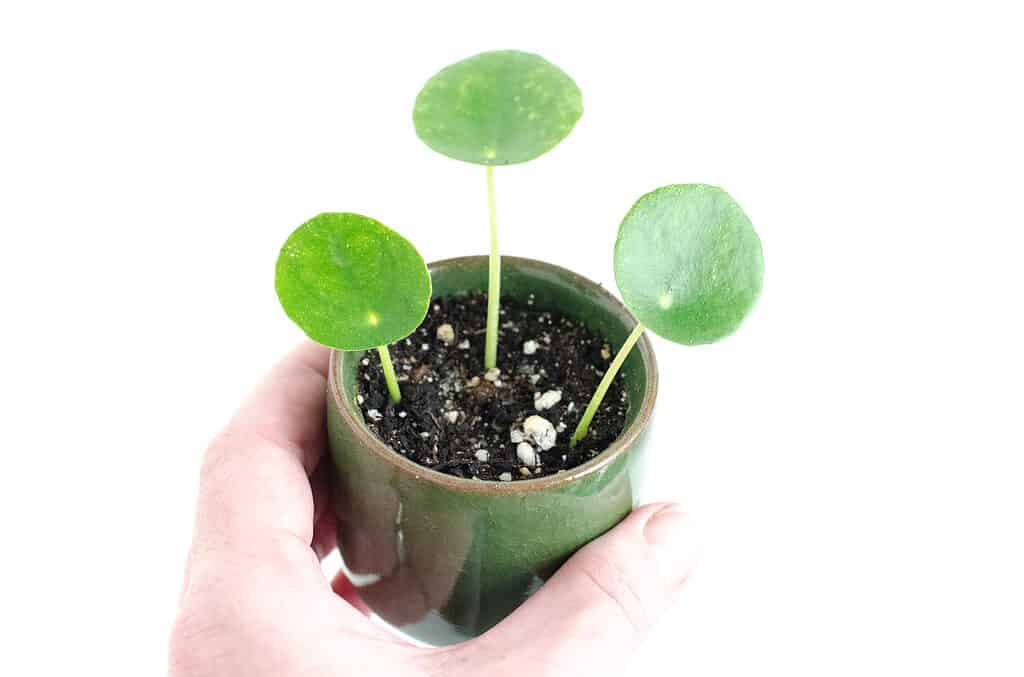
Espegren propagated his Chinese Money plant, giving it to friends across Norway and Sweden.
©Pegasene/Shutterstock.com
Long story short, once Espegren started caring for his plant, it thrived, and he propagated it, giving it to friends across Norway and Sweden. Soon Pilea peperomioides spread throughout Europe, making its way to North America in the mid-20th century. Pilea peperomioides has only been widely available in the U.S. since about 2010.
So what is the best way to go about Chinese money plant watering?
Chinese Money Plant Watering: How Much and How Often
How much water your plant requires depends on a number of factors, from plant placement, the time of the year, and the size of the plant and its pot, the needs will vary. A Chinese money plant planted in a terra-cotta pot placed in a Southern window will require more water and need to be watered more frequently than a plant in an Eastern window in the wintertime. You’ll become accustomed to its water requirements once you’ve had your Chinese money plant for a while. But as a general rule, during the summer, Pilea peperomioides need to be watered once a week. In the winter hold off on watering until the soil is dry at least 2 inches down.
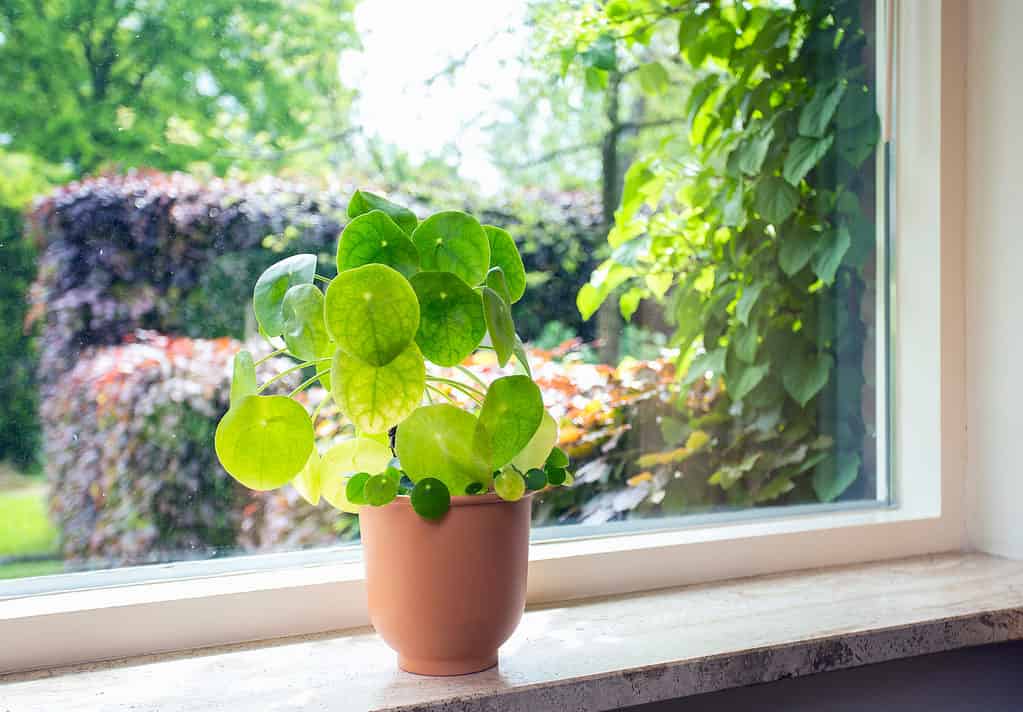
©A-photographyy/Shutterstock.com
The amount of water required will vary based on the size of the plant and its container. The method of watering you choose will also dictate the amount of water necessary.
Chinese Money Plant Watering: Watering Methods
There are three ways to go about Chinese money plant watering:
- over the soil
- bottom watering
- water bath
Over the Soil
Over the soil watering involves pouring the water directly onto the soil. The water may be supplied from a faucet, watering can, or cup. regardless of the source, the water should be allowed to run through the soil, drenching it. Allow your Chinese money plant time to drain completely prior to returning it to its saucer.
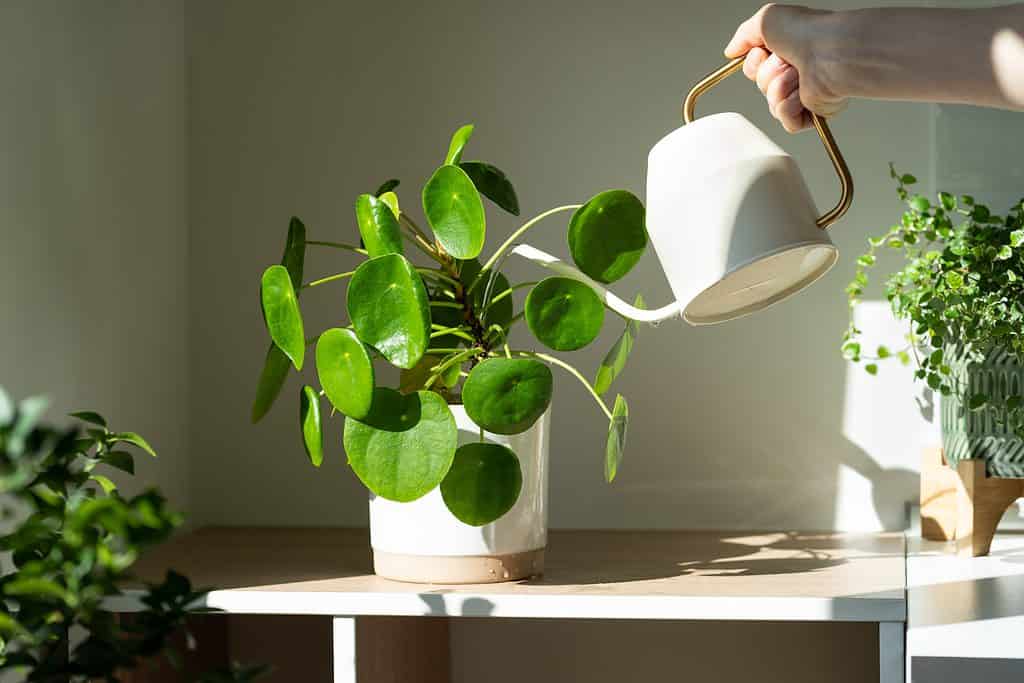
Over the soil watering involves pouring the water directly onto the soil.
©DimaBerlin/Shutterstock.com
Bottom Watering
Bottom watering is a method by which you water your plant from the bottom, by filling the saucer with water, which the soil will absorb. Continue to add water to the saucer as long as the soil continues to soak it up. Once the water starts to remain in the saucer, pour it out. Allow the thoroughly watered plant to rest in a saucer for a bit, 30 minutes to an hour, to catch any runoff. After one hour pour out any remaining water from the saucer, as once the Chinese money plant is watered, it needs to immediately begin to dry out.
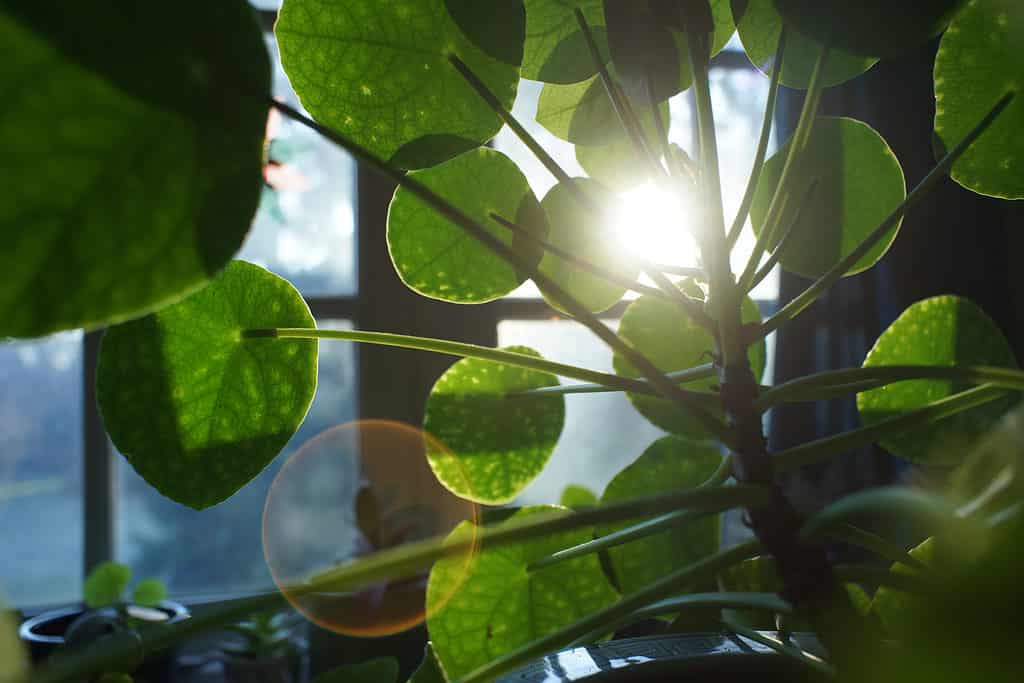
Once a Chinese money plant is watered, it needs to immediately begin to dry out.
©Floris Verweij/Shutterstock.com
Water Bath
A water bath, as its name suggests, relies on submerging your plant in water up to its stems. The water around the plant’s container will bubble as it replaces the air in the dry soil. Once the water ceases to bubble, your plant is fully watered.
Regardless of the method of watering you choose, be aware that Chinese money plants do not especially like for their leaves to be wet. Take care when watering your pant to water around the base, wetting the soil. If your Chinese money plant’s leaves become dusty, gently clean them with a soft cloth rather than water.
Chinese Money Plant Watering: Overwatering
Here’s the skinny on why you shouldn’t overwater your Chinese money plant. Chinese money plants are prone to root rot. Root rot can occur from having soil that is too wet for the roots and rhizomes to access oxygen, causing ataxia. Secondary causes are bacteria or fungi that thrive in wet/ damp conditions. Regardless of the underlying cause, root rot is difficult to treat and almost always results in the death of the plant. So, err on the side of caution when watering your Chinese money plant. Signs of overwatering include yellowing leaves and limp plant stems. Ironically, you can keep a Chinese money plant offshoot in water indefinitely, as long as you are changing the water regularly. While the plant will not grow as vigorously as in soil, it won’t get root rot, either.
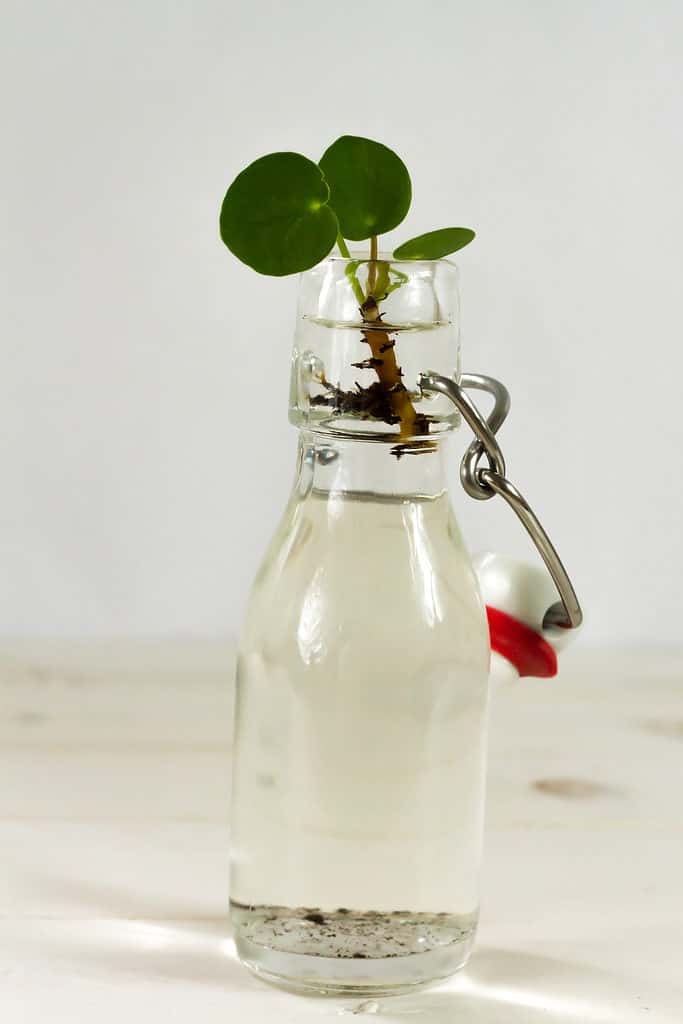
Ironically, you can keep a Chinese money plant offshoot in water indefinitely, as long as you are changing the water regularly.
©Patrycja Nowak/Shutterstock.com
Chinese money plant watering, how much and when: only when the soil is dry, watering thoroughly while keeping its leaves dry. Your plant will thank you with years of lovely round green leaves and plenty of opportunities to propagate! Interested in learning more about Pilea peperomiodies? Click here!
The photo featured at the top of this post is © DimaBerlin/Shutterstock.com
Sources
- houseplantcentral.com, Available here: https://houseplantcentral.com/pilea-peperomioides-watering/
- pilea.com, Available here: https://www.pilea.com/post/how-to-water-your-pilea-properly
- livelyroot.com, Available here: https://www.livelyroot.com/blogs/plant-care/how-to-care-for-your-chinese-money-plant
Thank you for reading! Have some feedback for us? Contact the AZ Animals editorial team.






